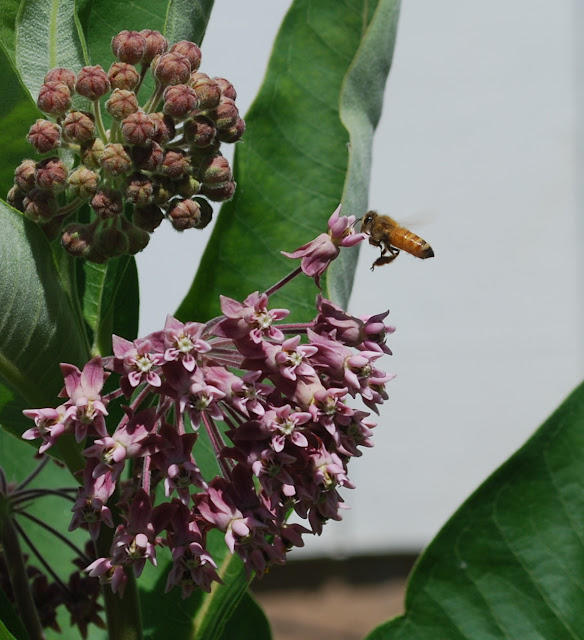 |
| Mulberries "Illinois Everbearing". 7.13.16 |
 |
| Collard Greens "Vates". 7.13.16 |
It's been raining more than usual for SW Washington summer. As a result, there are more weeds and things are looking unkempt. There is more humidity than usual, so I don't feel up to as much outside time.
Mulberries are looking great. Great flavor. I thought deer would eat the tree and birds would strip the berries, but neither has turned out to be the case. Each day, I can stand under the tree and pull off berries and eat them on the spot.
The collards are growing vigorously. Since the rain slugs have made their presence known. I put out some more slug bait today.
The resurrected Chinese beans are growing rapidly. Last week I put in a trellis system, with strings tied to sticks that are stuck into the soil. Some of the beans have climbed 3 to 4 feet, others 1 foot. I may need to add taller trellis, which is already a hybrid of Rube Goldberg and Davy Crockett.
As I clean up the front flower beds, the main flower that I will leave in place will be daylilies. They are the most rewarding for least effort.
The Johnny Jump-Up (viola) plants, that I grew from seeds this spring, are blooming nicely. They
 |
| Chinese Beans. 7.13.16 |
can be expected to self-seed for future years. This location can use the brightness.
 |
| Daylily "Strawberry Candy". 7.13.16 |
 |
| Daylily "Luxury Lace". 7.13.16 |
Shasta daisies dominate the wildflower meadows now.
The pumpkins are ranging well beyond their garden beds. This area of grass can go without mowing until fall. There should be a good crop of pumpkins and winter squash this year. Even the spaghetti squash are producing many squashes - about 2 dozen squashes on 3 vines.
For pollinating cucurbits, I'm following the following rule. Each is pollinated with its own species, so
C. pepo gets C.
pepo - that's zucchini, summer yellow squash, and spaghetti squash.
C. maxima gets
C. maxima. That's mostly Pink Spaghetti Squash, French Pumpkins, and Golias Pumpkin. The only
C. moshata is Butternut Squash. They appear overrun by the bigger maximas, and so far I have not seen any blossoms or developing squashes on those.
 |
| Johnny Jump-Up from seed. 7.13.16 |
 |
| Shasta Daisies. 7.13.16 |
 |
| Pumpkin Patch. 7.13.16 |



































